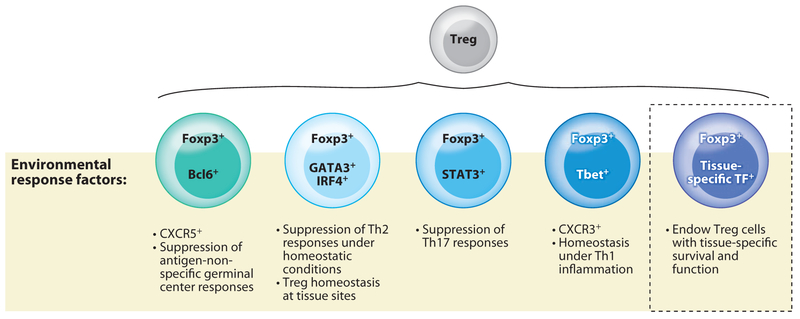Figure 2.
Regulatory T (Treg) cell heterogeneity and suppression of distinct classes of the immune response. Treg cells generated in the thymus or extrathymically can further specialize through upregulation or activation of transcription factors in response to different environmental stimuli. These environmental response factors can cooperate with Foxp3 to confer to Treg cells a transient or lasting cell state, enabling their tailored function under particular environmental or inflammatory conditions; for example, STAT3 activation in response to IL-10 leads to the generation of pSTAT3+ Treg cells capable of suppressing Th17 responses, or activation of STAT1 in response to IFN-γ or other STAT1-signaling cytokines leads to generation of Tbet+ Treg cells. In a given tissue, Treg cells, upon instruction by the tissue environment, induce expression of tissue-specific transcription factors whose cooperation with Foxp3 results in a distinct tissue-specific Treg cell transcriptional signature and function, and also supports Treg cell subset homeostasis.

